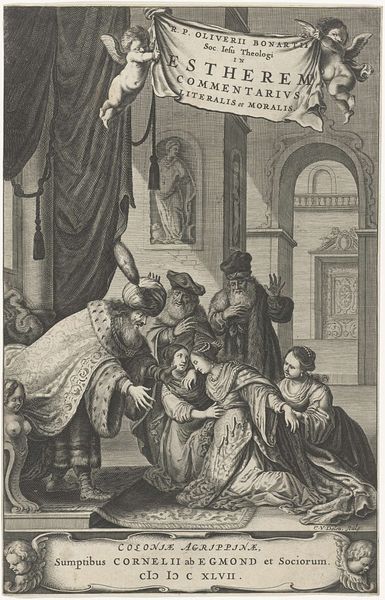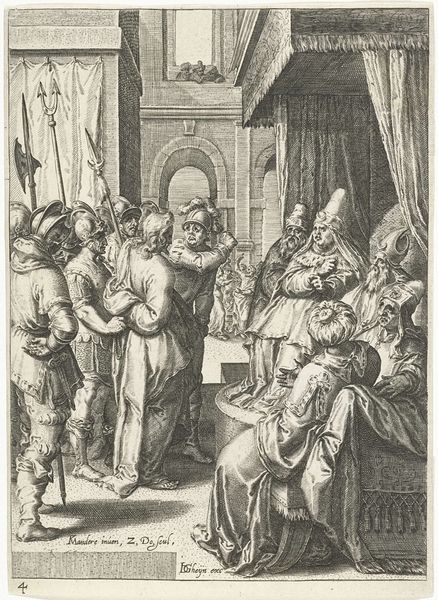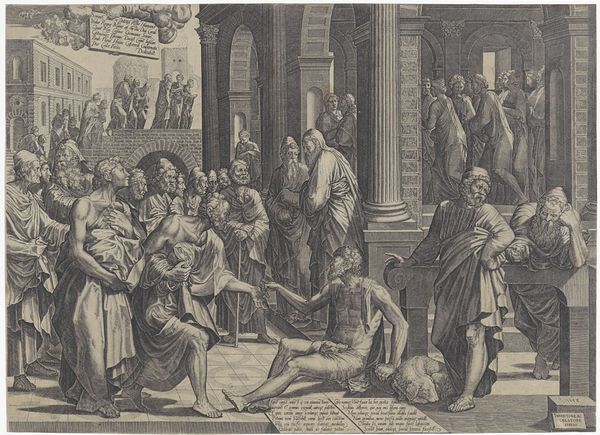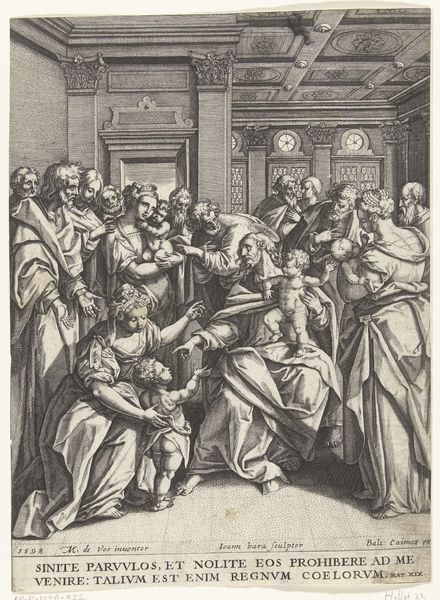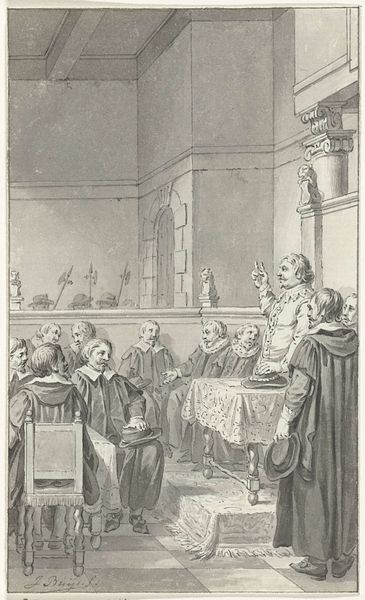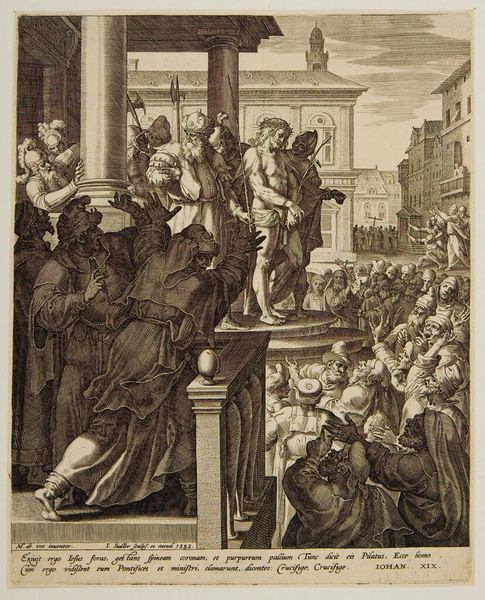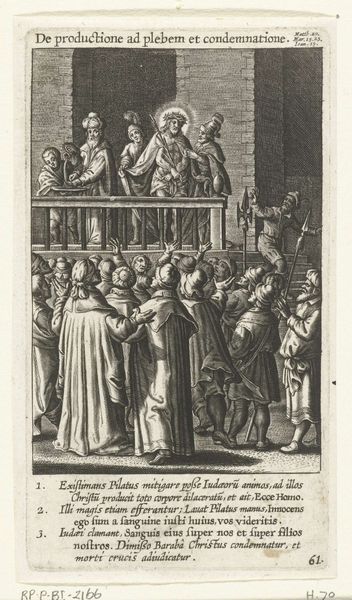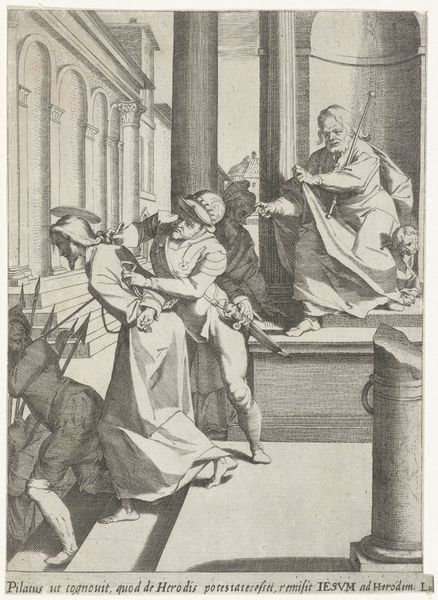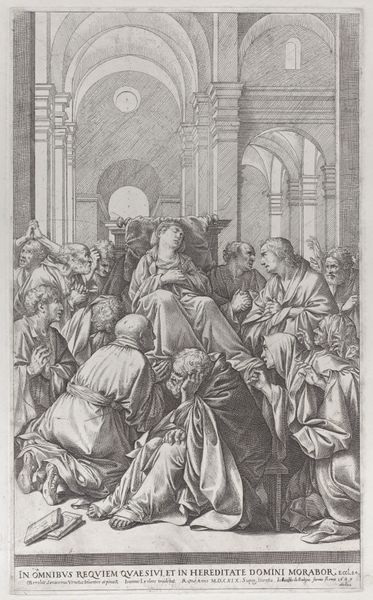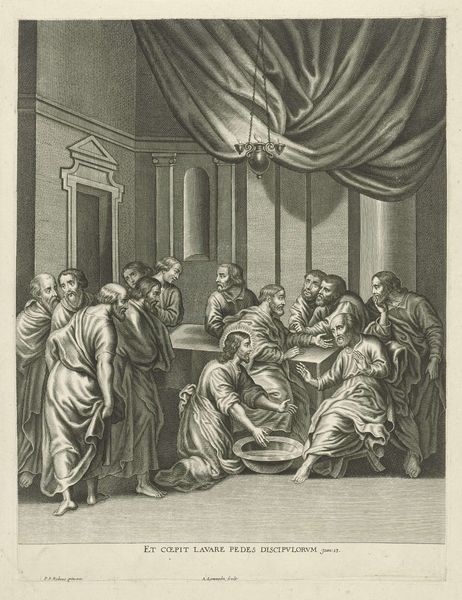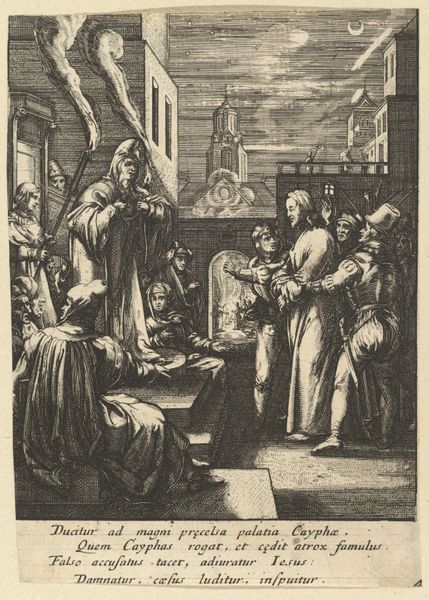
print, engraving
#
portrait
#
narrative-art
#
baroque
# print
#
old engraving style
#
figuration
#
history-painting
#
academic-art
#
engraving
Dimensions: height 208 mm, width 148 mm
Copyright: Rijks Museum: Open Domain
Curator: Standing here, we’re viewing "Preaching of Thomas Aquinas in Paris," an engraving created around 1610 by Egbert van Panderen. The work is currently held in the Rijksmuseum. Editor: My immediate impression is the sheer number of bodies filling this relatively small space, creating a sense of intense focus and perhaps even discomfort. Curator: The artist's academic approach emphasizes line and form. Look at how the converging lines of sight lead the eye to Aquinas, isolated within that small alcove above the crowd. There's a clear visual hierarchy. Editor: I see that, but I'm also struck by the diversity, or lack thereof, within this assembly. It presents a rather homogenous group in attendance; what was the reality of this gathering? Who was being excluded from accessing Aquinas's teachings at the time this print was made? Curator: Certainly, prints were not widely available, catering towards academic and theological elites, hence their portrayal within. Structurally, notice how the artist juxtaposes the relatively simple architecture with the complexity of human forms. This contrast is very important to interpreting the image's overall effect. Editor: And that’s precisely what I want to probe more deeply! This image wasn't created in a vacuum. Religious tensions were high at the time. How does that context shape our reading of a scene depicting theological authority and access? Were depictions like this one contributing to or challenging the prevailing societal power structures? Curator: While that's a valid sociohistorical point, consider, too, how the stark monochrome of the print concentrates the viewer's attention on the intricacies of light and shadow. Editor: Of course. But isn't acknowledging historical tensions just as vital as any formal study? Otherwise, aren't we at risk of overlooking the narratives that are pushed into the margins? Curator: A fair assessment, as it certainly allows viewers to grasp multiple points of interpretation of Panderen’s print! Editor: Indeed, let's ensure that contemporary dialogue pushes art into a critical, but thoughtful realm.
Comments
No comments
Be the first to comment and join the conversation on the ultimate creative platform.

